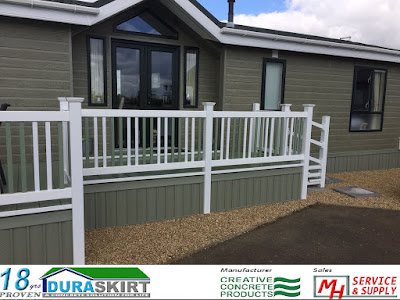What Are Manufactured Homes?
You have probably heard the term "manufactured housing," but maybe you aren't sure exactly what that means. In years gone by, manufactured homes were more commonly called trailers or mobile homes. These homes had the connotation of being temporary and of low quality. Manufactured housing today is a far cry from that old stereotype. While a manufactured home is not built stick by stick on site, the same basic principles of home building are used in the Construction. It begins with a two by four framework, the same as a traditional house. Plywood is then overlaid to create the basic form of the home - the roof goes on and is insulated and shingled. Electrical wiring, plumbing, insulation are all installed in their proper order. Sheet rock or wallboard is put in place and the appropriate electrical outlets and switches are installed these homes are generally fitted with contractor grade lighting fixtures, cabinets and hardware, sheet vinyl, carpeting and paint. If you are custom-ordering a manufactured home, you may be able to choose the paint, carpet color, and other finishes. Just as in a traditional home, upgrades in such items as cabinetry and light fixtures may be available skirting options .
The biggest construction difference with manufactured homes, and the reason for their name, is that they are built inside a facility in assembly-line fashion and they may only take 2 to 3 weeks turnaround time as opposed to the several months if not close to a year for homes built on location. A "single-wide" will be shipped intact, while a "double-wide" manufactured home will be delivered to the site in two sections and joined along a "marriage line" to form a complete home. While these homes may be seated on concrete foundations, it is equally if not more common to see them settled on jacks on a concrete slab. In the case of the latter, the base is then "skirted" and stairs and porches are added where appropriate. All electrical and plumbing connections are made, and your new home is move-in ready.
Manufactured homes may be purchased new from a dealer, and as mentioned above some customizations may be available. You may also find one of these homes in a manufactured housing community. In this case, the homes may be previously lived in but just as with traditional homes, a cosmetic facelift is easy to accomplish by changing out carpeting, giving it a new paint job, and changing out hardware for a more updated look. An affordable option, and great for a starter or retirement home, be sure to consider manufactured housing when searching for your next home.
The biggest construction difference with manufactured homes, and the reason for their name, is that they are built inside a facility in assembly-line fashion and they may only take 2 to 3 weeks turnaround time as opposed to the several months if not close to a year for homes built on location. A "single-wide" will be shipped intact, while a "double-wide" manufactured home will be delivered to the site in two sections and joined along a "marriage line" to form a complete home. While these homes may be seated on concrete foundations, it is equally if not more common to see them settled on jacks on a concrete slab. In the case of the latter, the base is then "skirted" and stairs and porches are added where appropriate. All electrical and plumbing connections are made, and your new home is move-in ready.
Manufactured homes may be purchased new from a dealer, and as mentioned above some customizations may be available. You may also find one of these homes in a manufactured housing community. In this case, the homes may be previously lived in but just as with traditional homes, a cosmetic facelift is easy to accomplish by changing out carpeting, giving it a new paint job, and changing out hardware for a more updated look. An affordable option, and great for a starter or retirement home, be sure to consider manufactured housing when searching for your next home.




Comments
Post a Comment